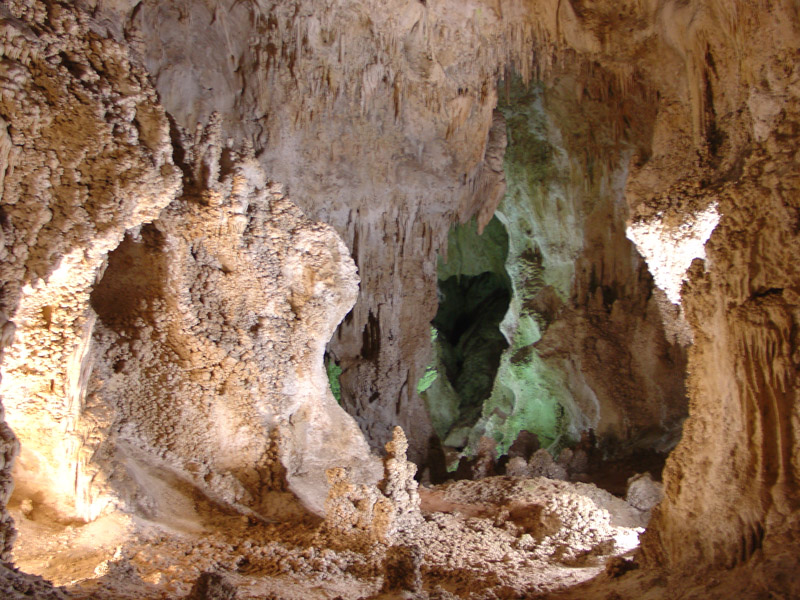
Carlsbad Caverns has irregularly shaped passageways with abundant speleothems, whereas Mammoth Cave has sinuous passages with relatively few speleothems. These differences reflect the characteristics of how the caverns formed over time. The oddly shaped passages in Carlsbad Caverns formed by the dissolution of limestone by slow-moving water below the groundwater table. This process produces irregularly rounded- or scallop-shaped passages. The dissolution of the limestone was probably enhanced by reactions with natural subsurface waters enriched in sulfuric acid during this early phase of cavern development. Research shows that the caverns in the Guadalupe Mountains region experienced periods of development extend as far back as Late Permian time, with additional periods during the Mesozoic era (including during the Laramide Orogeny), with major cavern development occurring in the Miocene to Pleistocene time (Hill, 2006). Erosion on the surface wore down the landscape surrounding the Guadalupe Mountains, lowering the water table and allowing the great underground passages to slowly drain empty over time and locally fill in with the speleothems we see today.